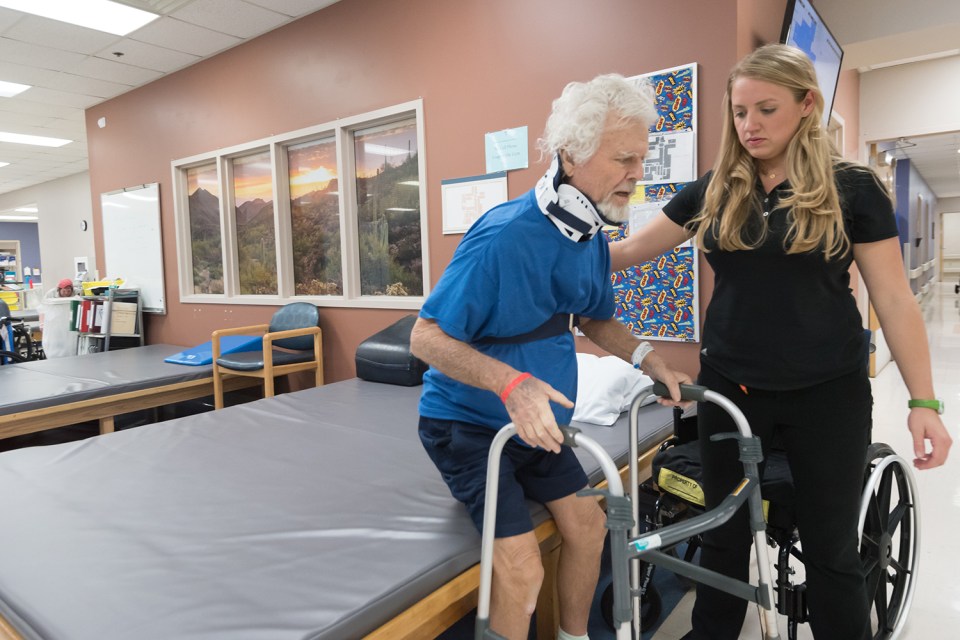When a patient leaves your hospital, where do they go next? That’s the question Encompass Health’s Chief Medical Officer Lisa Charbonneau answered in her presentation at the National Healthcare CMO Summit held in Irving, Texas Sept. 19-20.
In her presentation, “Where have all your patients gone (or why you should care about post-acute care),” Charbonneau discussed the different post-acute care settings, as well as the benefits of inpatient rehabilitation for the appropriate patient.
What’s the difference between inpatient rehabilitation facilities and skilled nursing facilities?
The number of nursing and therapy hours and visits from an attending physicians are just a few of the differences Charbonneau pointed out.
As regulated by Medicare, inpatient rehabilitation hospitals are required to be staffed by nurses 24 hours a day, whereas skilled nursing facilities have no such requirement. Attending physicians also visit more frequently in the inpatient setting, typically visiting patients five to seven times per week, where skilled nursing facilities are required to make patient visits every 30 days.
The length of stay at an inpatient rehabilitation facility versus a skilled nursing home is significantly different, as well. According to MedPAC, Medicare Payment Policy, the average length of stay at an inpatient rehabilitation hospital is about 12.7 days; it’s 38.4 days at a skilled nursing facility.
Who is appropriate for inpatient rehabilitation?
Inpatient rehabilitation hospitals are designed to provide intensive therapy to medically complex patients who can benefit from 24 hour nursing care and close medical management, while participating in an intensive program of physical, occupational, and if necessary, speech therapy The interdisciplinary approach includes a team of nurses, therapists a rehabilitation physician and case manager.
All inpatient rehabilitation patients must meet the following medical criteria:
- At least two therapy disciplines are required; needs to be able to withstand intensive therapy, generally at least three hours a day, five days a week
- Ability to actively participate and benefit from intensive rehabilitation therapy with a measurable, practical improvement in the patient’s function expected in a reasonable amount of time
- Receives physician supervision by a rehabilitation physician with a minimum of three face-to-face visits per week
- Receives interdisciplinary team approach to care including weekly team meetings
Inpatient rehabilitation is complex and highly regulated. CMS’s 60 percent rule requires at least 60 percent of all patients admitted to have at least one medical diagnosis or functional impairment from the CMS-13, which includes stroke, brain injury, amputation, spinal cord injury, femur fractures, neurological disorders, multiple trauma, congenital deformity, burns, osteoarthritis, rheumatiod arthritis, joint replacement and systemic vasculidites.
How stroke patients may benefit from inpatient rehabilitation
In 2016, the American Heart Association/American Stroke Association published guidelines on stroke patients, concluding that stroke patients who require rehabilitation would be best served in the inpatient rehabilitation setting.
AHA/ASA therapy recommendations include:
- All individuals with stroke should receive ADL (activities of daily living) training tailored to individual needs and eventual discharge setting
- Intensive, repetitive, mobility-task training is recommended for all individuals with gait limitations after stroke
- All individuals with motor speech disorders should have interventions including behavioral techniques and augmentative devices to supplement speech
Charbonneau recommended physicians seek out inpatient rehabilitation hospitals that have Disease-Specific Care for stroke from The Joint Commission, as this means the hospital has a higher level of accountability and specialized training to care for the needs of stroke patients.
Charbonneau also reviewed what to look for and expect from home health agencies, since holding downstream providers accountable for high quality care will help to reduce the possibility of patients being readmitted to the acute hospital after discharge.
The content of this site is for informational purposes only and should not be taken as professional medical advice. Always seek the advice of your physician or other qualified healthcare provider with any questions you may have regarding any medical conditions or treatments.



